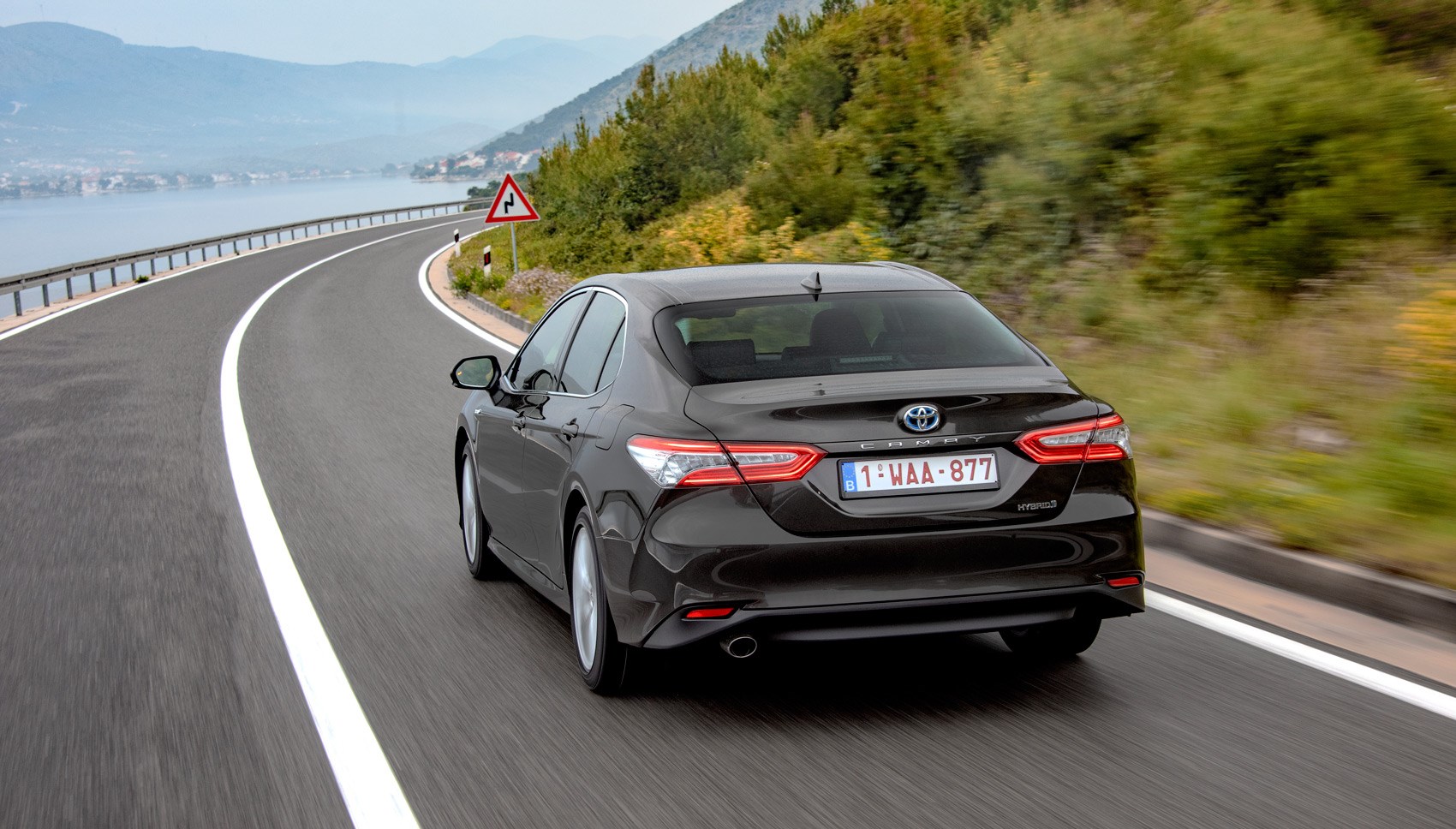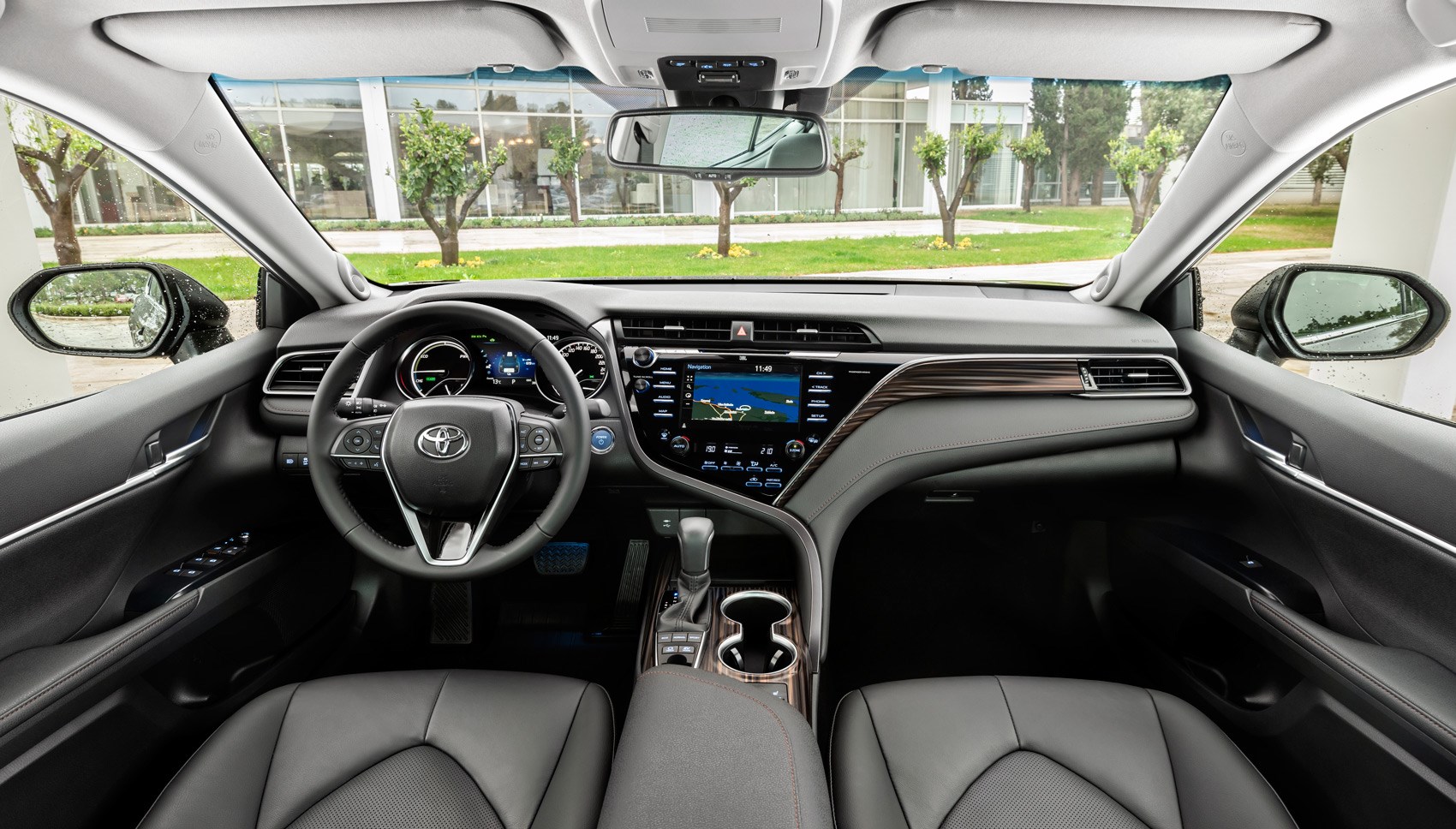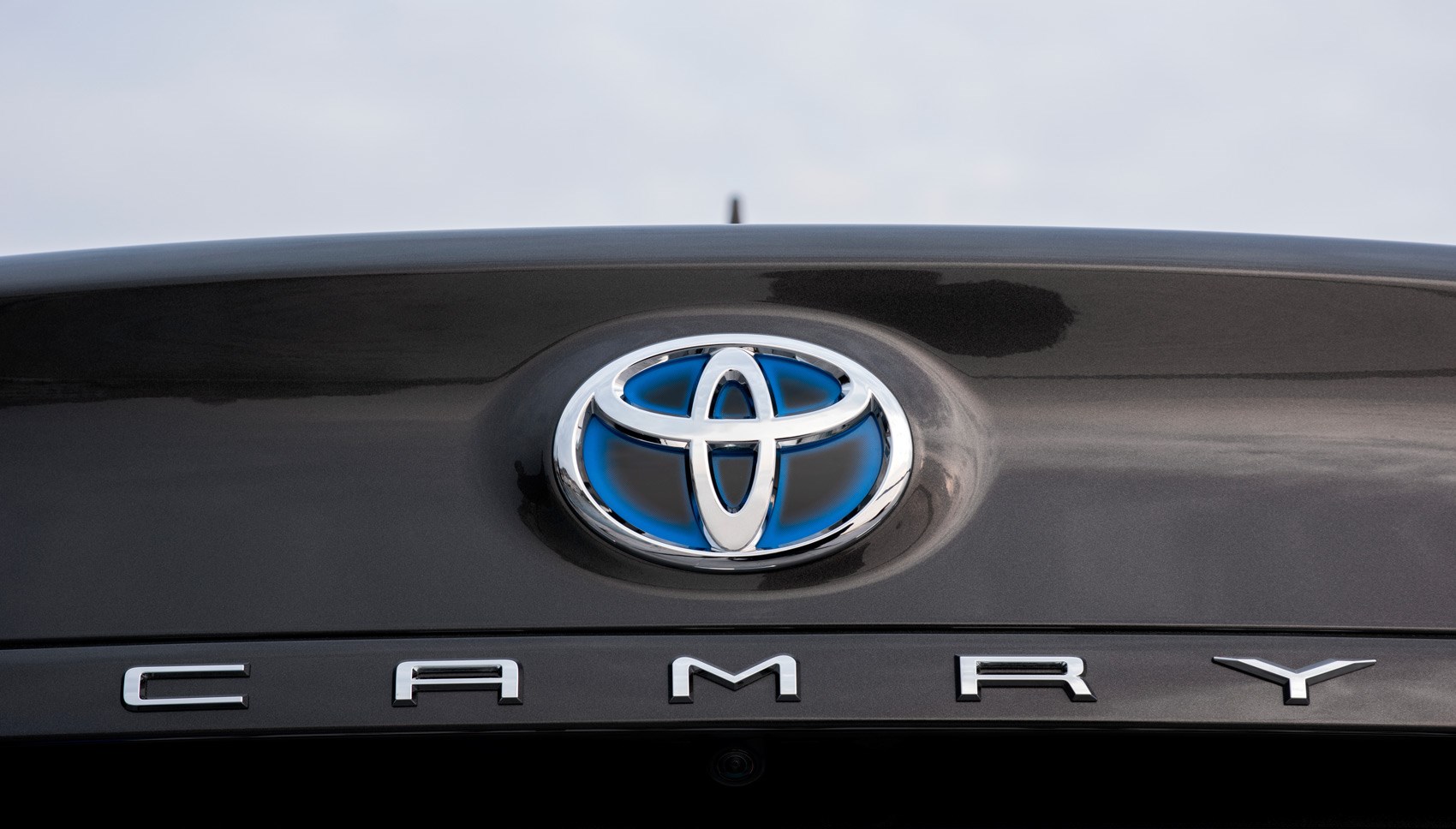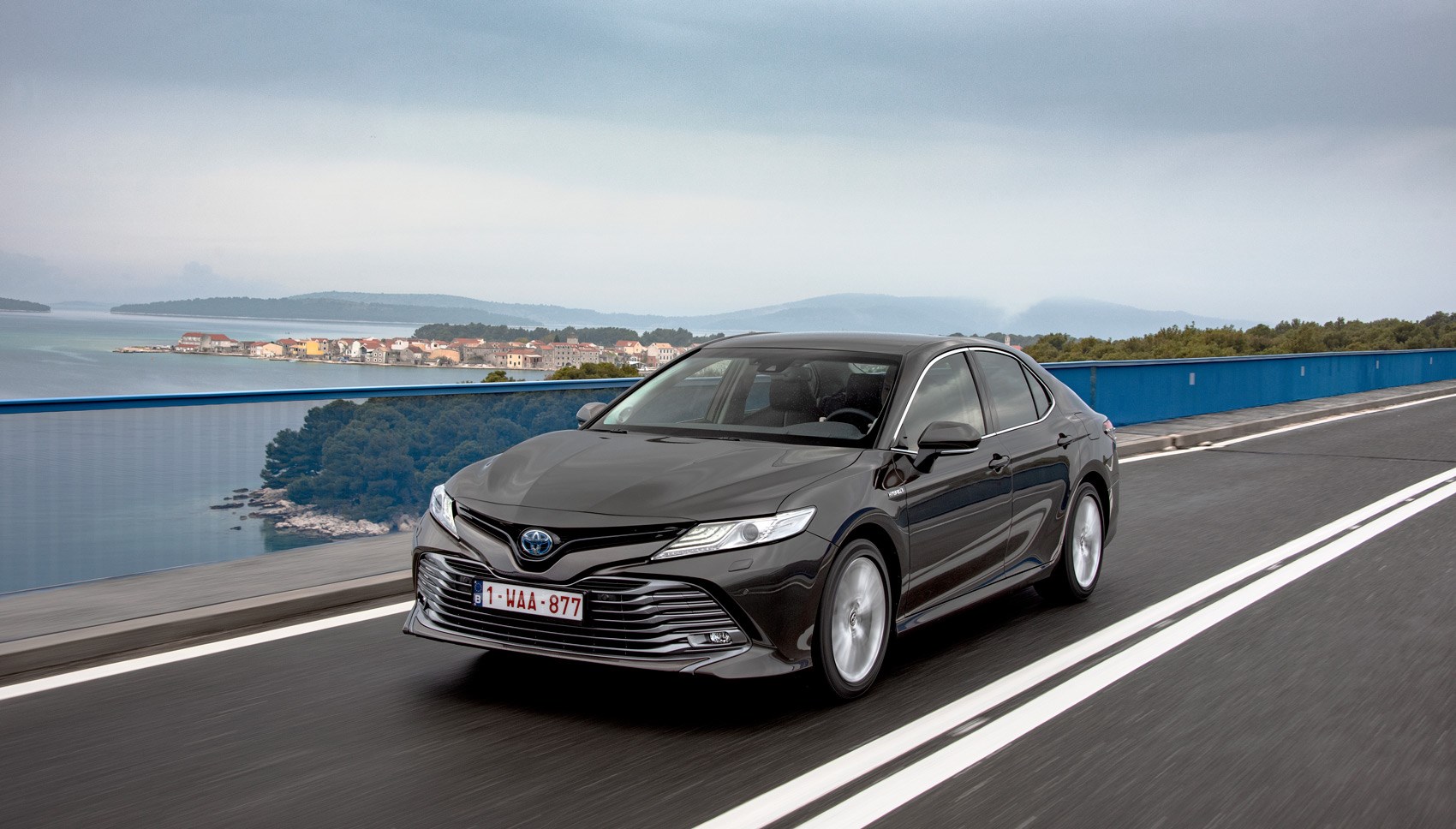► Toyota’s Camry saloon returns to the UK
► Hybrid-only, using RAV4 and Lexus ES tech
► Your new Mondeo/Insignia/Superb rival
Funny time to be reintroducing a saloon car that was never very popular here, given that saloons aren’t selling well, especially non-premium ones. But the significant bits about the name Toyota Camry Hybrid are Toyota – signifying reliability, ease of use and a positive dealer experience – and Hybrid. The new Camry is coming here only as a ‘self-charging’ (ie not a plug-in) hybrid, so Toyota has gone the whole hog and made Hybrid part of the car’s name. Its hybrid line-up now consists of this plus the Yaris, three shapes of Corolla, the CH-R, RAV4 and three Priuses, and that’s very much in tune with the new-car-choosing public’s mood.
But given all that choice, is there any good reason to go for the Camry?
Just what is a Camry in 2019?
The Camry badge has been around since 1982 – the year the Ford Sierra was introduced – but we’ve skipped a couple of generations since it last came to Britain. The version that arrives in showrooms in July is built on TNGA (Toyota New Global Architecture), which involves the GA-K platform with power coming from the latest Toyota Hybrid System (THS II). Lurking amid that forest of capital letters is a highly efficient four-cylinder Hybrid Dynamic Force petrol engine working with an electric motor and nickel-metal hydride (NiMH) battery.

Juggled by the PCU (Power Control Unit), the engine and/or the motor drives the front wheels via a Sequential Shiftmatic auto ’box, which involves planetary gears and works rather like a CVT but without the belts. Suspension is by MacPherson struts at the front and double wishbones at the rear.
The 2.5-litre engine, the motor, the generator and the gears are very compact, allowing a low bonnet, and the battery is small enough to be relocated from the boot to under the rear seats, freeing up luggage space.
The lowdown on the Camry interior
In a refreshingly un-SUV-like manner, the dash and seats are low. There’s enough adjustment of driver’s seat and steering wheel to allow you to adopt a slouchy posture, or you can crank everything into a more upright position if you’re missing the Verso, departed from the Toyota line-up along with the Avensis.
It’s reasonably roomy and comfortable up front. In the back there’s a fantastic amount of legroom, and decent headroom. It can fit three adults in the back, and the boot capacity of 524 litres will make light work of their suitcases and cabin bags (it’s far bigger than the boot of the closely related but more strikingly designed Lexus ES, albeit 101 litres shy of the Superb).

The dash, steering wheel and centre console are all new, if not particularly modern, stylish or innovative. So you get a traditional auto gearlever (which can slide over to allow manual changes), a central seven-inch touchscreen, and instrumentation that sandwiches an information screen between two analogue dials, configurable using buttons on the steering wheel. There’s a smattering of physical buttons on the centre console and by your window-side knee. It’s all reasonably easy to figure out and operate without having to look away from the road for long.
Just two versions, both well equipped
The UK gets two versions of the Camry Hybrid. The slightly cheaper of the two is badged Design and is priced from £29,995. It comes on 17-inch alloys, with leather upholstery, LED headlights with automatic high beam, dual zone air-con, smart entry, front and rear parking sensors, reversing camera, heated and power-adjustable front seats, sat-nav, Bluetooth and DAB but no Apple CarPlay. Safety kit fitted as standard includes adaptive cruise control and a lane-departure warning system that will help steer you out of trouble.
The Excel version, priced from £31,295, has 18-inch wheels, LED foglights and dual-beam projector headlights, blindspot monitoring, Rear Cross Traffic Alert (to do some of the looking for you – and if necessary some of the braking – when you’re reversing).

As is often the case with Toyota, it’s a well-equipped, safety-focused car that feels built to last, but slightly lacking in the quality of materials and the sophistication of operation that separates mainstream cars from premium products. Those premium saloons aren’t just Germans these days – check out the latest Peugeot 508 to see how well a cabin can be designed, and how good-to-touch materials can be deployed, without costing the earth.
Hope you’re not in a hurry…
The standout figure on the Camry’s spec sheet is 112mph – its remarkably modest top speed. Clearly, given that other Toyotas and Lexuses using the same powertrain are capable of going faster, that’s quite deliberate. It says this isn’t a performance car; a 0-62mph time of 8.3 seconds goes along with that.
The petrol engine makes 176bhp and the electric motor chips in with 118bhp; the combined system output is 215bhp, with 149lb ft of torque from the motor and 163 from the engine. It’s not slow, but there’s nothing exciting about the power output or its delivery. In EV-only running it’s smooth and quiet, and much the same is true when you’re wafting along at steady speeds with the highly efficient petrol four taking a lead. But floor the throttle even half-hard and it gets noisy and does that unsatisfactory CVT thing of mismatching engine revs and the car’s speed.

Your reward is decent fuel consumption – around 50mpg officially, closer to 40 in our day and a half with the car. CO2 emissions are a respectable 98g/km with the 17in wheels, 101 on 18s.
Ride quality is good (although most of our test route in Croatia was smoothly surfaced) and the steering isn’t big on precision or feedback, but the Camry corners in a composed, non-wallowy way.
Verdict
The spectre of the minicab looms large over the Camry. This is in many ways a good thing; the Superb and Mercedes E-Class both work brilliantly as taxis as well as private transport. Like a pro cabby, you want Mum and Dad’s Taxi to be comfortable, roomy, and reliable. It scores very highly there. Just put out of your mind any thoughts that this is some sort of blood relative of the Supra, GT86, Corolla BTCC or Yaris WRC.
Check out our Toyota reviews